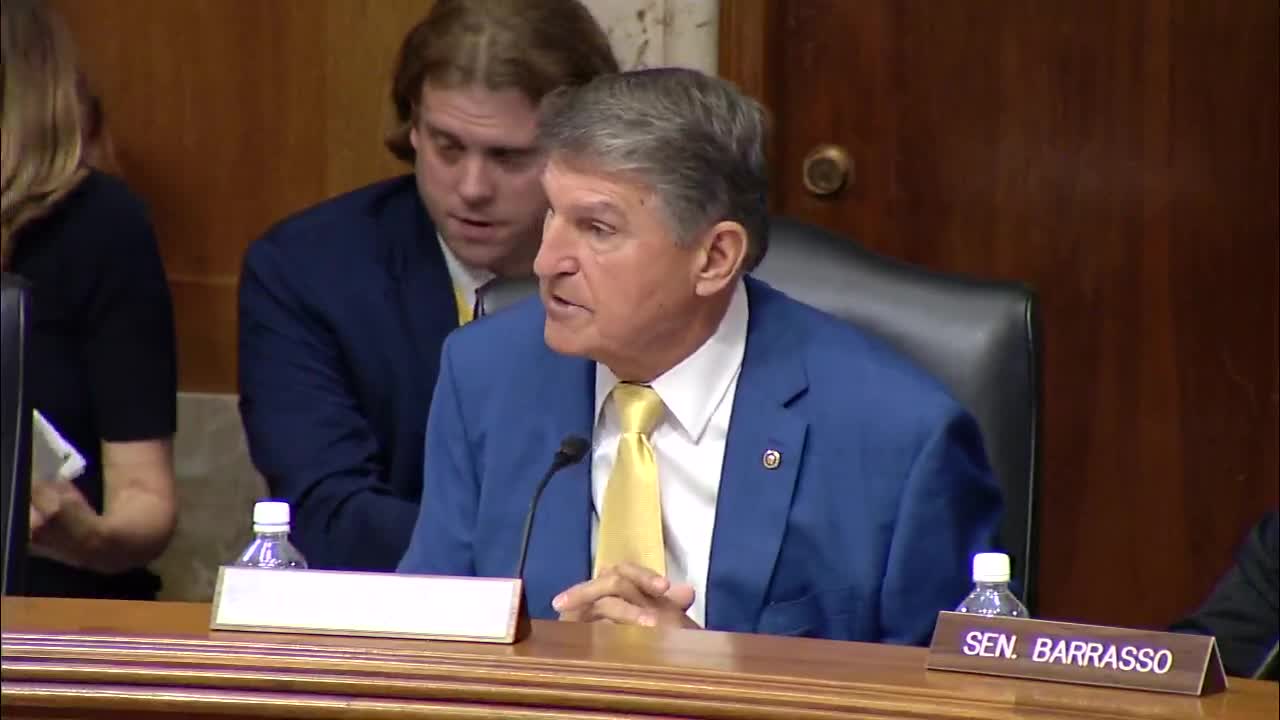Senate passes landmark clean energy bill amid bipartisan support
July 31, 2024 | Energy and Natural Resources: Senate Committee, Standing Committees - House & Senate, Congressional Hearings Compilation

This article was created by AI summarizing key points discussed. AI makes mistakes, so for full details and context, please refer to the video of the full meeting. Please report any errors so we can fix them. Report an error »

In a recent government meeting, lawmakers made significant strides toward advancing a bipartisan energy bill aimed at enhancing the United States' clean energy infrastructure. The discussions highlighted the urgency of transitioning to renewable energy sources and the need for streamlined permitting processes to support this transition.
Senator Joe Manchin emphasized the importance of the bill, stating it would serve as a \"tremendous asset\" for the country, addressing both current and future energy needs. He acknowledged the collaborative efforts of committee members, despite some disagreements, and encouraged all members to support the legislation.
The bill, identified as Senate Bill 4753, received a favorable vote with 15 in favor and 4 against. Senators expressed gratitude for the work done by their colleagues, particularly in addressing critical issues such as renewable energy transmission and infrastructure upgrades. Senator Alex Padilla specifically noted the bill's provisions for reconductoring, energy storage, and offshore wind transmission as vital for meeting California's clean energy goals.
However, concerns were raised regarding certain aspects of the bill, particularly the 150-day statute of limitations for mining and energy projects, which some lawmakers believe may encourage litigation rather than expedite project approvals. Senator Padilla suggested looking to the bipartisan infrastructure law as a model for more reasonable timelines.
Senator Martin Heinrich echoed these sentiments, highlighting the lengthy process required to build essential infrastructure in New Mexico, which took 17 years for a major regional transmission line project. He called for continued negotiations to refine the bill, particularly regarding project timelines and transparency measures.
Overall, the meeting underscored a collective commitment to advancing clean energy initiatives while navigating the complexities of bipartisan legislation. The bill's passage marks a crucial step toward achieving the nation's climate goals and enhancing energy reliability.
Senator Joe Manchin emphasized the importance of the bill, stating it would serve as a \"tremendous asset\" for the country, addressing both current and future energy needs. He acknowledged the collaborative efforts of committee members, despite some disagreements, and encouraged all members to support the legislation.
The bill, identified as Senate Bill 4753, received a favorable vote with 15 in favor and 4 against. Senators expressed gratitude for the work done by their colleagues, particularly in addressing critical issues such as renewable energy transmission and infrastructure upgrades. Senator Alex Padilla specifically noted the bill's provisions for reconductoring, energy storage, and offshore wind transmission as vital for meeting California's clean energy goals.
However, concerns were raised regarding certain aspects of the bill, particularly the 150-day statute of limitations for mining and energy projects, which some lawmakers believe may encourage litigation rather than expedite project approvals. Senator Padilla suggested looking to the bipartisan infrastructure law as a model for more reasonable timelines.
Senator Martin Heinrich echoed these sentiments, highlighting the lengthy process required to build essential infrastructure in New Mexico, which took 17 years for a major regional transmission line project. He called for continued negotiations to refine the bill, particularly regarding project timelines and transparency measures.
Overall, the meeting underscored a collective commitment to advancing clean energy initiatives while navigating the complexities of bipartisan legislation. The bill's passage marks a crucial step toward achieving the nation's climate goals and enhancing energy reliability.
View full meeting
This article is based on a recent meeting—watch the full video and explore the complete transcript for deeper insights into the discussion.
View full meeting